Interesting Facts About Stars
Interesting facts about stars
Stars are giant, luminous spheres of plasma. There are billions of them — including our own sun — in the Milky Way Galaxy. And there are billions of galaxies in the universe. So far, we have learned that hundreds also have planets orbiting them.
1. Stars are made of the same stuff

All stars begin from clouds of cold molecular hydrogen that gravitationally collapse. As they cloud collapses, it fragments into many pieces that will go on to form individual stars. The material collects into a ball that continues to collapse under its own gravity until it can ignite nuclear fusion at its core. This initial gas was formed during the Big Bang, and is always about 74% hydrogen and 25% helium. Over time, stars convert some of their hydrogen into helium. That’s why our Sun’s ratio is more like 70% hydrogen and 29% helium. But all stars start out with ¾ hydrogen and ¼ helium, with other trace elements.
2. Most stars are red dwarfs

If you could collect all the stars together and put them in piles, the biggest pile, by far, would be the red dwarfs. These are stars with less than 50% the mass of the Sun. Red dwarfs can even be as small as 7.5% the mass of the Sun. Below that point, the star doesn’t have the gravitational pressure to raise the temperature inside its core to begin nuclear fusion. Those are called brown dwarfs, or failed stars. Red dwarfs burn with less than 1/10,000th the energy of the Sun, and can sip away at their fuel for 10 trillion years before running out of hydrogen.
3. Mass = temperature = color

The color of stars can range from red to white to blue. Red is the coolest color; that’s a star with less than 3,500 Kelvin. Stars like our Sun are yellowish white and average around 6,000 Kelvin. The hottest stars are blue, which corresponds to surface temperatures above 12,000 Kelvin. So the temperature and color of a star are connected. Mass defines the temperature of a star. The more mass you have, the larger the star’s core is going to be, and the more nuclear fusion can be done at its core. This means that more energy reaches the surface of the star and increases its temperature. There’s a tricky exception to this: red giants. A typical red giant star can have the mass of our Sun, and would have been a white star all of its life. But as it nears the end of its life it increases in luminosity by a factor of 1000, and so it seems abnormally bright. But a blue giant star is just big, massive and hot.
4. Most stars come in multiples

It might look like all the stars are out there, all by themselves, but many come in pairs. These are binary stars, where two stars orbit a common center of gravity. And there are other systems out there with 3, 4 and even more stars. Just think of the beautiful sunrises you’d experience waking up on a world with 4 stars around it.
5. The biggest stars would engulf Saturn

Speaking of red giants, or in this case, red supergiants, there are some monster stars out there that really make our Sun look small. A familiar red supergiant is the star Betelgeuse in the constellation Orion. It has about 20 times the mass of the Sun, but it’s 1,000 times larger. But that’s nothing. The largest known star is the monster UY Scuti. It is a current and leading candidate for being the largest known star by radius and is also one of the most luminous of its kind. It has an estimated radius of 1,708 solar radii (1.188×109 kilometres; 7.94 astronomical units); thus a volume nearly 5 billion times that of the Sun.
6. There are many, many stars

Quick, how many stars are there in the Milky Way. You might be surprised to know that there are 200-400 billion stars in our galaxy. Each one is a separate island in space, perhaps with planets, and some may even have life.
7. The Sun is the closest star

Okay, this one you should know, but it’s pretty amazing to think that our own Sun, located a mere 150 million km away is average example of all the stars in the Universe. Our own Sun is classified as a G2 yellow dwarf star in the main sequence phase of its life. The Sun has been happily converting hydrogen into helium at its core for 4.5 billion years, and will likely continue doing so for another 7+ billion years. When the Sun runs out of fuel, it will become a red giant, bloating up many times its current size. As it expands, the Sun will consume Mercury, Venus and probably even Earth.
8. The biggest stars die early

Small stars like red dwarfs can live for trillions of years. But hypergiant stars, die early, because they burn their fuel quickly and become supernovae. On average, they live only a few tens of millions of years or less.
9. Failed stars

Brown dwarfs are substellar objects that occupy the mass range between the heaviest gas giant planets and the lightest stars, of approximately 13 to 75–80 Jupiter masses (MJ). Below this range are the sub-brown dwarfs, and above it are the lightest red dwarfs (M9 V). Unlike the stars in the main-sequence, brown dwarfs are not massive enough to sustain nuclear fusion of ordinary hydrogen (1H) to helium in their cores.
10. Sirius: The Brightest Star in the Night Sky

Sirius is a star system and the brightest star in the Earth’s night sky. With a visual apparent magnitude of −1.46, it is almost twice as bright as Canopus, the next brightest star. The system has the Bayer designation Alpha Canis Majoris (α CMa). What the naked eye perceives as a single star is a binary star system, consisting of a white main-sequence star of spectral type A0 or A1, termed Sirius A, and a faint white dwarf companion of spectral type DA2, called Sirius B.
To know more click the links: white dwarf, supernova, +stars, pulsars
sources: wikipedia and universetoday.com
image credits: NASA/JPL, Morgan Keenan, ESO, Philip Park / CC BY-SA 3.0
More Posts from Astrosciencechick and Others
why is mercury shrinking?
Unlike the Earth, Mercury’s surface is made up of just one continental plate covering the entire planet, as Mercury’s interior is slowly cooling it also shrinks and the total volume of mercury shrinks.


The moon, is beautiful
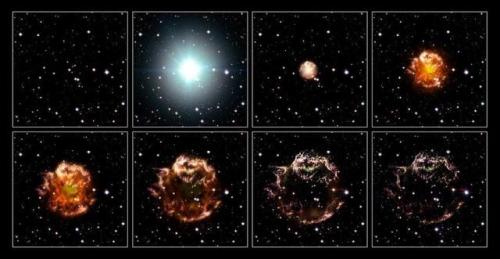
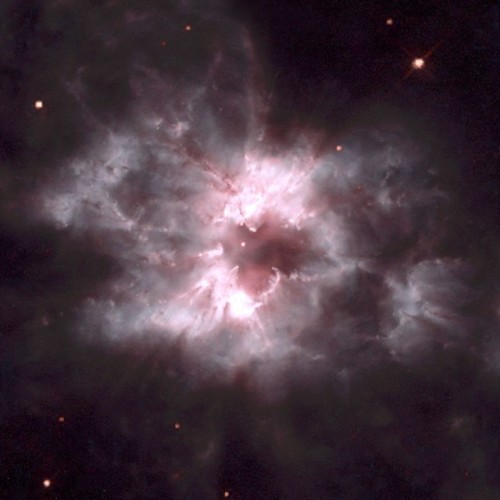
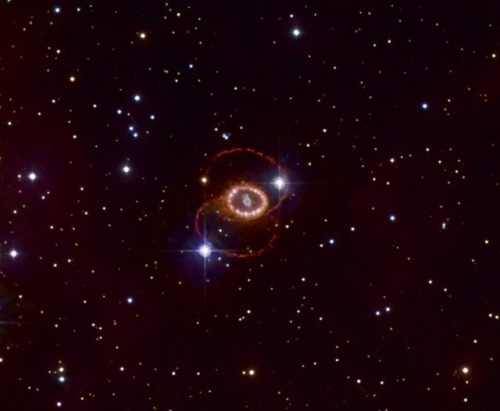

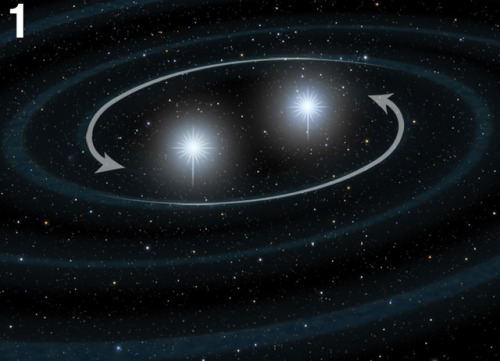
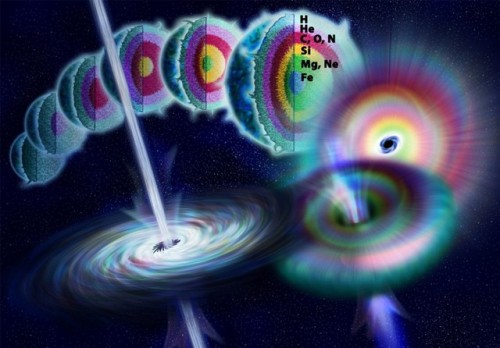
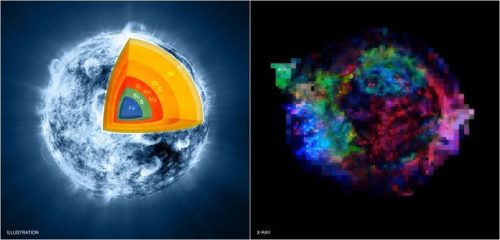
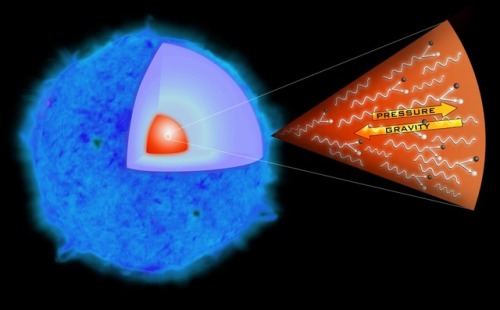
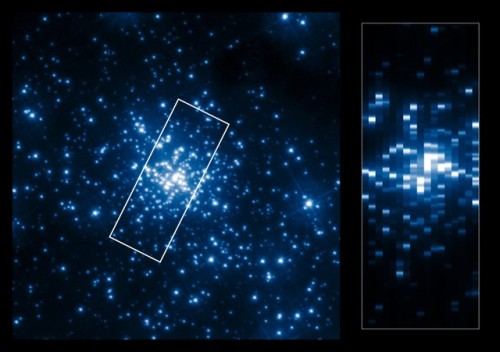

These Are The 6 Different Ways To Make A Supernova
“Yet, if you cross a certain mass threshold, you overcome that quantum barrier, and that triggers a runaway fusion reaction, destroying the white dwarfs and leading to a different class of supernova: a thermal runaway supernova.
So, we’ve got core collapse supernovae and thermal runaway supernovae. Does that mean that there are only two classes?
Hardly. There’s more than one way to make both a thermal runaway and a core collapse supernova, and each mechanism or method has properties that are wholly unique to it. Here are the six ways to make a supernova, starting with the least-massive trigger and going up from there.”
So, you’ve got a star, and you want to trigger a supernova with it? Great! Every star that ever gets made in the Universe has the possibility of going supernova. If your star is born with more than about 8 solar masses, it’s practically an inevitability that a supernova will ensue, and that it will be a core-collapse supernova at that. But there are four independent ways to make that happen, and only one of them is the conventional way you probably think about it. If your star has less than 8 solar masses, though, it ends its life in a white dwarf, but that’s not necessarily the end. White dwarfs can gain enough mass, through two different known mechanisms, to someday go supernova as well.
There are six different ways to make a supernova, and each one is spectacular. Which one is your favorite?


Comet McNaught next to the dome of the NTT on La Silla. The picture was taken in January 2007.
Credit: ESO/H.H.Heyer


NASA’s Fermi Traces Source of Cosmic Neutrino to Monster Black Hole
NASA - Fermi Gamma-ray Space Telescope logo. July 12, 2018 For the first time ever, scientists using NASA’s Fermi Gamma-ray Space Telescope have found the source of a high-energy neutrino from outside our galaxy. This neutrino traveled 3.7 billion years at almost the speed of light before being detected on Earth. This is farther than any other neutrino whose origin scientists can identify. High-energy neutrinos are hard-to-catch particles that scientists think are created by the most powerful events in the cosmos, such as galaxy mergers and material falling onto supermassive black holes. They travel at speeds just shy of the speed of light and rarely interact with other matter, allowing them to travel unimpeded across distances of billions of light-years.
Image above: NASA’s Fermi (top left) has achieved a new first—identifying a monster black hole in a far-off galaxy as the source of a high-energy neutrino seen by the IceCube Neutrino Observatory (sensor strings, bottom). Image Credits: NASA/Fermi and Aurore Simonnet, Sonoma State University. The neutrino was discovered by an international team of scientists using the National Science Foundation’s IceCube Neutrino Observatory at the Amundsen–Scott South Pole Station. Fermi found the source of the neutrino by tracing its path back to a blast of gamma-ray light from a distant supermassive black hole in the constellation Orion. “Again, Fermi has helped make another giant leap in a growing field we call multimessenger astronomy,” said Paul Hertz, director of the Astrophysics Division at NASA Headquarters in Washington. “Neutrinos and gravitational waves deliver new kinds of information about the most extreme environments in the universe. But to best understand what they’re telling us, we need to connect them to the ‘messenger’ astronomers know best—light.” Scientists study neutrinos, as well as cosmic rays and gamma rays, to understand what is going on in turbulent cosmic environments such as supernovas, black holes and stars. Neutrinos show the complex processes that occur inside the environment, and cosmic rays show the force and speed of violent activity. But, scientists rely on gamma rays, the most energetic form of light, to brightly flag what cosmic source is producing these neutrinos and cosmic rays. “The most extreme cosmic explosions produce gravitational waves, and the most extreme cosmic accelerators produce high-energy neutrinos and cosmic rays,” says Regina Caputo of NASA’s Goddard Space Flight Center in Greenbelt, Maryland, the analysis coordinator for the Fermi Large Area Telescope Collaboration. “Through Fermi, gamma rays are providing a bridge to each of these new cosmic signals.” The discovery is the subject of two papers published Thursday in the journal Science. The source identification paper also includes important follow-up observations by the Major Atmospheric Gamma Imaging Cherenkov Telescopes and additional data from NASA’s Neil Gehrels Swift Observatory and many other facilities.
Image above: The discovery of a high-energy neutrino on September 22, 2017, sent astronomers on a chase to locate its source—a supermassive black hole in a distant galaxy. Image Credits: NASA’s Goddard Space Flight Center. On Sept. 22, 2017, scientists using IceCube detected signs of a neutrino striking the Antarctic ice with energy of about 300 trillion electron volts—more than 45 times the energy achievable in the most powerful particle accelerator on Earth. This high energy strongly suggested that the neutrino had to be from beyond our solar system. Backtracking the path through IceCube indicated where in the sky the neutrino came from, and automated alerts notified astronomers around the globe to search this region for flares or outbursts that could be associated with the event. Data from Fermi’s Large Area Telescope revealed enhanced gamma-ray emission from a well-known active galaxy at the time the neutrino arrived. This is a type of active galaxy called a blazar, with a supermassive black hole with millions to billions of times the Sun’s mass that blasts jets of particles outward in opposite directions at nearly the speed of light. Blazars are especially bright and active because one of these jets happens to point almost directly toward Earth.
Image above: Fermi-detected gamma rays from TXS 0506+056 are shown as expanding circles. Their maximum size, color—from white (low) to magenta (high)—and associated tone indicate the energy of each ray. Image Credits: NASA/DOE/Fermi LAT Collab. Fermi scientist Yasuyuki Tanaka at Hiroshima University in Japan was the first to associate the neutrino event with the blazar designated TXS 0506+056 (TXS 0506 for short). “Fermi’s LAT monitors the entire sky in gamma rays and keeps tabs on the activity of some 2,000 blazars, yet TXS 0506 really stood out,” said Sara Buson, a NASA Postdoctoral Fellow at Goddard who performed the data analysis with Anna Franckowiak, a scientist at the Deutsches Elektronen-Synchrotron research center in Zeuthen, Germany. “This blazar is located near the center of the sky position determined by IceCube and, at the time of the neutrino detection, was the most active Fermi had seen it in a decade.”
Visualizing Gamma Rays From Blazar TXS 0506+056
Video above: Fermi-detected gamma rays from TXS 0506+056 are shown as expanding circles. Their maximum size, color—from white (low) to magenta (high)—and associated tone indicate the energy of each ray. The first sequence shows typical emission; the second shows the 2017 flare leading to the neutrino detection. Video Credits: NASA/DOE/Fermi LAT Collab., Matt Russo and Andrew Santaguida/SYSTEM Sounds. NASA’s Fermi Gamma-ray Space Telescope is an astrophysics and particle physics partnership, developed in collaboration with the U.S. Department of Energy and with important contributions from academic institutions and partners in France, Germany, Italy, Japan, Sweden and the United States. The NASA Postdoctoral Fellow program is administered by Universities Space Research Association under contract with NASA. For more about NASA’s Fermi mission, visit: https://www.nasa.gov/fermi Fermi Gamma-Ray Space Telescope: http://www.nasa.gov/mission_pages/GLAST/main/index.html Related links: The source identification paper: http://science.sciencemag.org/cgi/doi/10.1126/science.aat1378 Major Atmospheric Gamma Imaging Cherenkov Telescopes: https://magic.mpp.mpg.de/ NASA’s Neil Gehrels Swift Observatory: https://www.nasa.gov/mission_pages/swift/main Deutsches Elektronen-Synchrotron: http://www.desy.de/index_eng.html Images (mentioned), Video (mentioned), Text, Credits: NASA/Felicia Chou/Sean Potter/GSFC/Dewayne Washington. Greetings, Orbiter.ch Full article



Solar flares produce gamma rays by several processes, one of which is illustrated here. The energy released in a solar flare rapidly accelerates charged particles. When a high-energy proton strikes matter in the sun’s atmosphere and visible surface, the result may be a short-lived particle – a pion – that emits gamma rays when it decays.
Credit: NASA’s Goddard Space Flight Center


I want to be the writing on the wall.
(via DesignEveryDay)









💌
It’s been a really long time since I came on tumblr, but I started thinking a bit about how difficult year 13 was for me and what I could have done differently. they’re lengthy but there’s a lot to be said!!
These are some things that helped me when I was studying with depression - I have to say these don’t always help, and nothing will replace getting medical help. These just helped me take each day as it came, so I hope they’re of some use!
Please, please, please think of your health and really take care of yourself whilst studying and even more so in exam season.
⭐️⭐️⭐️⭐️ lots of love




And that’s when Earth made dolphins. LOL.
-
 rachelfgrace liked this · 1 month ago
rachelfgrace liked this · 1 month ago -
 wordstoasong liked this · 4 months ago
wordstoasong liked this · 4 months ago -
 annita899lsv94h liked this · 6 months ago
annita899lsv94h liked this · 6 months ago -
 psychedelicexperimental liked this · 7 months ago
psychedelicexperimental liked this · 7 months ago -
 gommetrik reblogged this · 9 months ago
gommetrik reblogged this · 9 months ago -
 ehlytriesagain liked this · 10 months ago
ehlytriesagain liked this · 10 months ago -
 tryingsomething2024 reblogged this · 10 months ago
tryingsomething2024 reblogged this · 10 months ago -
 traumland liked this · 1 year ago
traumland liked this · 1 year ago -
 dailiojikalyte liked this · 1 year ago
dailiojikalyte liked this · 1 year ago -
 thisisgettingdifficult reblogged this · 1 year ago
thisisgettingdifficult reblogged this · 1 year ago -
 niceandhot-blog liked this · 1 year ago
niceandhot-blog liked this · 1 year ago -
 sarahaesthetic liked this · 1 year ago
sarahaesthetic liked this · 1 year ago -
 helpsomeonescoming-thesecond reblogged this · 1 year ago
helpsomeonescoming-thesecond reblogged this · 1 year ago -
 meowwwww78 liked this · 1 year ago
meowwwww78 liked this · 1 year ago -
 deliciouskingpaper liked this · 1 year ago
deliciouskingpaper liked this · 1 year ago -
 zohalia liked this · 1 year ago
zohalia liked this · 1 year ago -
 irfediwankai liked this · 1 year ago
irfediwankai liked this · 1 year ago -
 howebrit liked this · 1 year ago
howebrit liked this · 1 year ago -
 joypics liked this · 1 year ago
joypics liked this · 1 year ago -
 the-enchanted-little-star liked this · 2 years ago
the-enchanted-little-star liked this · 2 years ago -
 mochalovechild reblogged this · 2 years ago
mochalovechild reblogged this · 2 years ago -
 kittys-fandoms liked this · 2 years ago
kittys-fandoms liked this · 2 years ago -
 enkadw7 liked this · 2 years ago
enkadw7 liked this · 2 years ago -
 angis-things liked this · 2 years ago
angis-things liked this · 2 years ago -
 peintre-stephane liked this · 2 years ago
peintre-stephane liked this · 2 years ago -
 december-1-st liked this · 2 years ago
december-1-st liked this · 2 years ago